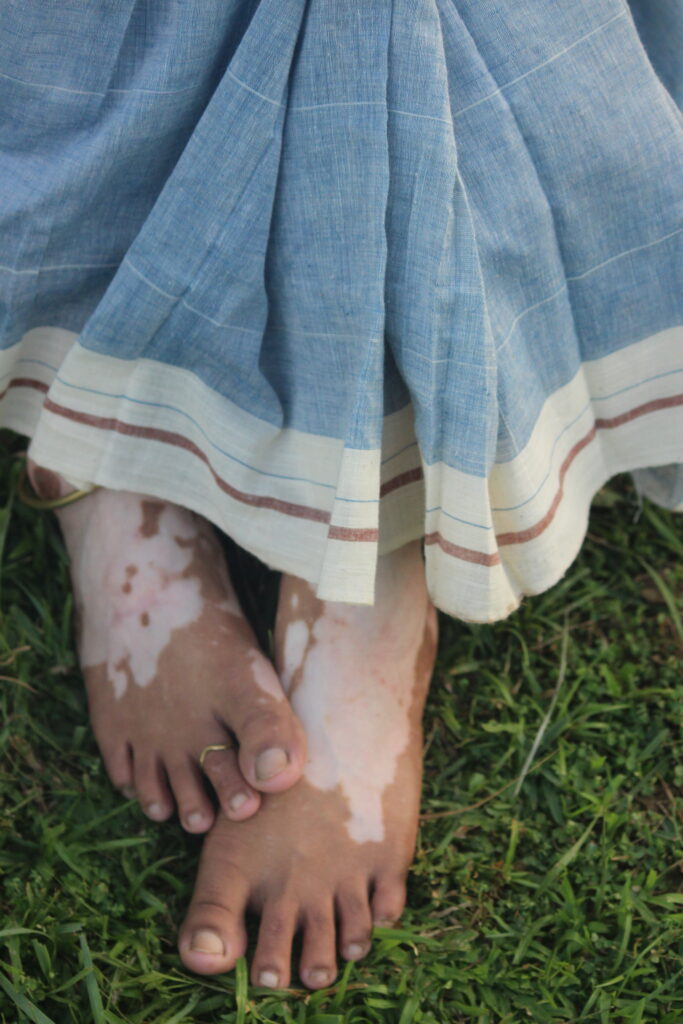In the serene town of Santiniketan, West Bengal, a vibrant community of artisans is creating magic by blending traditions and eco-friendly artistry . These master craftsmen and women are carrying forward the timeless craft seamlessly by using natural -dyed textile .
These artists have inherited their craft over generations and foster a deep connection with nature’s palette. The dyes are extracted from plant -based materials like pomegranate rind, myrobalan,turmeric, black catechu , madder and indigo . Ajit Kumar Das, a National Award -winning artisan and Kalamkari artist Santiniketan revealed an interesting fact about orange tones which are extracted from the red seeds of the latkan plants.
Das’s workshop embodies the artisanal spirit of the region. His work patterns showcase the distinctive use of bold lines and intricate patterns, mainly inspired by nature. “ Every piece is alive with stories”, he mentioned in one of the interviews, referring to the motifs of trees, birds and flowers that adorn his textile. His commitment to using natural dyes and his mastery of kalamkari art have brought huge recognition that extends beyond the boundaries of Santiniketan.
The artisans are not only creators but also storytellers as they are weaving cultural heritage through every thread. Their work has drawn international attention as they are incorporating Santiniketan’s fabrics into modern fashion.
How natural dyes are made in Santiniketan:
- Sourcing Raw material :
Artisans gather the plant based organic material to create a vibrant palette of colours by extracting hues from plants, fruits and flowers. The raw materials include pomegranate rind, madder root, turmeric,indigo leaves, myrobalan and black catechu . Even marigold flowers and the red seeds of the latkan are used for extraction.
- Extraction :
The raw materials are processed through boiling, steeping or fermenting to extract pigments. For instance, indigo leaves are processed through fermentation , while turmeric is boiled to release yellow colour.
- Fabric Preparation :
Fabrics are treated with natural mordants like alum. This process ensures the dyes bond well with the materials and enhances the richness of colours.
- Dyeing Process:
The fabric is immersed in the dye bath, repeatedly to get the desired shades of colour. Colours are often layers as per the respective designs.
- Eco- friendly Process:
The process is completely eco-friendly as no synthetic chemicals are used. Even the leftover dye water is repurposed for irrigation or composting making the process sustainable.

